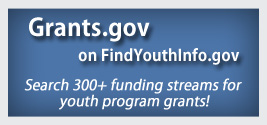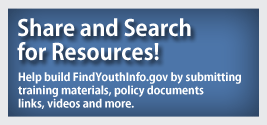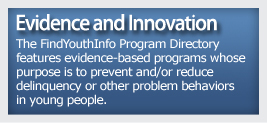References
Billig, S. & Sandel, K. (2003). Colorado learn and serve: An evaluation report. Denver, CO: RMC Research Corporation.
Billig, S., Root, S., & Jesse, D. (2005). The impact of participation in service-learning on high school students’ civic engagement. Denver, CO: RMC Research Corporation.
Brill, C. L. (1994). The effects of participation in service-learning on adolescents with disabilities. Journal of Adolescence, 17, 369–380.
Chapman, C., & Skinner, R. (1999). Service-learning and community service in K-12 public schools. Retrieved from http://nces.ed.gov/pubsearch/pubsinfo.asp?pubid=1999043
Chung, A. N. (1997). Service as a strategy in out-of-school time: A how-to manual. Washington, DC: Corporation for National Service. Retrieved from http://nationalserviceresources.org/learns/service-ost
Deakin Crick, R., Taylor, M., Tew, M., Samuel, E., Durant, K., & Ritchie, S. (2005). A systematic review of the impact of citizenship education on student learning and achievement. In Research in Education Library. London: EPPI‑Centre, Social Science Research Unit, Institute of Education.
Dewey, John. (1916). Democracy and education: An introduction to the philosophy of education. New York, NY: Macmillan.
Dymond, S. K., Renzaglia, A., & Chun, E. (2007). Elements of effective high school service learning programs that include students with and without disabilities. Remedial and Special Education, 28(4), 227-243.
Edward M. Kennedy Serve America Act of 2009 Pub L. 111-13
Frey, L. M. (2003, May/June). Abundant beautification: An effective service-learning project for students with emotional or behavioral disorders. Teaching Exceptional Children, 35.
Irby, M., Ferber, T., & Pittman, K. (with Tolman, J., & Yohalem, N.). (2001). Youth action: Youth contributing to communities, communities supporting youth. Washington, DC: Forum for Youth Investment.
Krajewski , J., & Callahan, J. (1998). Service-learning: A strategy for vocational training of young adults with special needs. Journal for Vocational Special Needs Education, 21(1), 34-38.
Learn and Serve America (2010). What is service-learning? Retrieved from http://www.learnandserve.gov/about/service_learning/index.asp
Leming, J. S. (2001). Integrating a structured ethical reflection curriculum into high school community service experiences: Impact on students’ sociomoral development. Adolescence, 36, 33–45.
Lerner, R.M., Lerner, J.V., Phelps, E., et al. (2008). The positive development of youth technical report. The 4‑H study of positive youth development: Report of the findings from the first four waves of data collection: 2002–2003, 2003–2004, 2004–2005, and 2005–2006. Medford, MA: Tufts University.
Mann, H. (1849). Twelfth annual report covering the year 1848. Boston, MA: Dutton and Wentworth, State Printers, 90.
Michelsen, E., Zaff, J. F., & Hair, E. C. (2002). Civic engagement programs and youth development: A synthesis. Washington, DC: Child Trends.
Melchior, A. (1998). National evaluation of Learn and Serve America school and community-based programs: Final report. Washington, DC: Corporation for National and Community Service.
Mohamed, I. A. (2001). Notes from a program officer: The case for youth engagement. In I. Mohamed & W. Wheeler (Eds.), Broadening the bounds of youth development: Youth as engaged citizens. Takoma Park, MD: Innovation Center for Community and Youth Development.
Mohamed, I. A., & Wheeler, W. (Eds.). (2001). Broadening the bounds of youth development: Youth as engaged citizen. Takoma Park, MD: Innovation Center for Community and Youth Development.
Muscott, H. (2001). An introduction to service-learning for students with emotional and behavioral disorders: Answers to frequently asked questions. Beyond Behavior, 10(3), 8-15.
National and Community Service Act of 1990 amended through P.L. 106-170, 42 U.S.C.A. 12501 et seq.
Naughton, S. (2000). Youth and communities helping each other: Community-based organizations using service-learning as a strategy during out-of-school time. Washington, DC: Corporation for National Service.
Ohn, J., & Wade, R. (2009). Community service-learning as a group inquiry project: Elementary and middle school Civic Connections teachers' practices of integrating historical inquiry in community service-learning. Social Studies, 100(5), 200-211.
RMC Research Corporation. (2008). Standards and indicators for effective service-learning practice. Scotts Valley, CA: National Service-Learning Clearinghouse. Retrieved from
http://www.servicelearning.org/instant_info/fact_sheets/k-12_facts/standards
RMC Research Corporation. (2007). Why districts, schools, and classrooms should practice service-learning. Scotts Valley, CA: National Service-Learning Clearinghouse. Retrieved from http://www.servicelearning.org/instant_info/fact_sheets/k-12_facts/why
Rockwell, S. (Spring, 2001). Service-learning: Barriers, benefits and models of excellence. Beyond Behavior, 10(3), 16-21.
Roehlkepartain, E. C. (1995). Everyone wins when youth serve. Washington, DC: Points of Light Foundation.
Roehlkepartain, Eugene C. (2007). Benefits of community-based service-learning. Scotts Valley, CA: National Service-Learning Clearinghouse. Retrieved from
http://www.servicelearning.org/instant_info/fact_sheets/cb_facts/benefits_cbosl
Scales, P. C., Blyth, D. A., Berkas, T. H., & Kielsmeier, J. C. (2000). The effects of service-learning on middle school students’ social responsibility and academic success. Journal of Early Adolescence, 20 (3), 332-358.
Shumer, Robert. (2005). Service-learning research: What have we learned from the past. In Growing to greatness: The state of service-learning report, 48-53. Saint Paul, Minn.: National Youth Leadership Council.
Skinner, R., & Chapman, C. (1999). Service-learning and community service in K-12 public schools: Statistics in brief. Education Statistics Quarterly, 1(4), 51-59.
Spring, K., Grimm, R., & Dietz, N. (2009). Community service and service-learning in America’s schools, 2008. Washington, DC: Corporation for National and Community Service, Office of Research and Policy Development. Retrieved from http://www.nationalservice.gov/pdf/08_1112_lsa_prevalence.pdf (PDF, 44 pages)
Urban Institute. (2004). Volunteer management capacity in America's charities and congregations: A briefing report. Washington, DC: Author.
Yamauchi, L., Billig, S., Meyer, S., & Hofschire, L. (2006). Student outcomes associated with service-learning in a culturally relevant high school program. Journal of Prevention & Intervention in the Community, 32(1/2), 149-164.
Zaff, J., & Lerner, R. (2010). Service-learning Promotes positive youth development in high school. Phi Delta Kappan, 91(5), 21-23.
Collaboration Profiles
Youth Voices
Feature Articles
Tools & Guides
Technical Assistance
Websites


Announcements
Youth Topics
Collaboration Profiles
Briefs
Youth Voices

Map My Community is a tool designed specifically to assist you in locating resources in your community to help you build and strengthen your youth program. Get ideas for new partnerships, identify gaps in your community, and learn about resources to avoid duplication of effort.



















